This is a common type of idiopathic generalised epilepsy (IGE) that often develops in children and young adults, as well as some older adults, who are otherwise typically healthy and developmentally well. It affects about 10% of people with epilepsy. Idiopathic refers to arising spontaneously or the cause not being known, although JME can run in some families, especially where close family members also have idiopathic or genetic generalised epilepsy. It is treatable with anti‐seizure medications.
More females are usually affected by JME than males. In JME seizures are more likely to happen if the person has missed sleep and is fatigued. They can occur in the morning or later during the day. Lifestyle related triggers such as stress and alcohol use can also lead to seizures. There is a high rate of photosensitive epilepsy (PSE) among people with JME.
Symptoms
Seizures can develop between the ages of 8 and 40, but usually they start between 11 and 25 years. Three different types of seizure can occur in this sort of epilepsy:
- .About 90% of people with JME have Generalised convulsive seizures (GTCS) which usually happen in the morning, within one or two hours of waking. Some patients, less than 10%, never develop GTCS. GTCS may also follow a cluster of myoclonic seizures.
- Myoclonic seizures affect all people with JME. These seizures cause the person to have sudden jerks of the muscles, especially of the upper limbs. These seizures usually happen soon after waking up and may be seen when getting dressed or having breakfast. Often the person may simply appear uncoordinated and may drop items such as cups or bowls. Often such early morning myoclonic episodes have been a feature before the person has their first major convulsive seizure. They can be associated with tiredness and with photosensitive triggers.
- Absence seizures occur in about 30% of cases of JME, during which a child or young person seems to go blank for a brief period. These episodes can happen at any time of the day. Some children with JME (5-15%) have had a previous epilepsy diagnosis of Childhood Absence Epilepsy (CAE).
With JME it is also possible to have photosensitive epilepsy (PSE) seizures triggered by flashing or flickering lights. This is particularly the case if the person is tired, and it is advisable to follow guidance to reduce PSE triggers. to This type of seizure may occur in over 90% of all individuals with JME.
Diagnosis
A full accurate history is very important in diagnosing this type of epilepsy. it is important to tell the doctor or nurse about the myoclonic or “jerking” seizures, or early morning shaking the person has had. An EEG (electroencephalogram) test which records the ongoing electrical activity in the brain will be done and this is often abnormal which helps to confirm the JME diagnosis. A specific pattern of generalised spike and polyspike wave at 3-3.5 hz in sleep or waking confirms the diagnosis of JME.
During this EEG test a bright light will be flashed into the person’s eyes (this is called photic stimulation), to see if they have photosensitivity.
Treatment
Children and adults with juvenile myoclonic epilepsy almost always have all their seizures controlled by anti-seizure medications such as Sodium Valproate (Epilim) which can be effective for all seizures types. However, as it is harmful in pregnancy, other ASM’s may be used for females of child-bearing age. These may include Lamotrigine (Lamictal), levetiracetam (Keppra) topiramate, (Topamax), zonisamide (Zonegran) or clobazam (Frisium).
It will often be necessary for the person to stay on treatment for the rest of their lives as if treatment is stopped the seizures will come back again. However, some will be able to come off medication at some point. Since the jerks and the seizures are particularly likely to happen to a person who does not get enough sleep or takes alcohol, it is important to maintain regular sleeping habits and avoid alcohol.
For those people who have photosensitive seizures it important that in addition to taking their medication regularly they also take precautions to avoid seizures being triggered by flashing/ flickering lights.
Prognosis
This type of epilepsy usually continues through adolescence into adult life. However, if medication is taken as prescribed, seizures (including the photosensitive seizures) are easily controlled in almost everyone with JME.
In most cases these medicines will need to be taken life‐long otherwise seizures will return. The majority of people who have juvenile myoclonic epilepsy have normal development and functioning and while some children may have difficulties in school most will not be adversely impacted.
Further Information
- Further information on Anti-Seizure Medications can be found by visiting the 'Treatment' section of our website.
- Further information on diagnosis can be found by visiting the 'Diagnosis' section of our website.
- Other useful resources surrounding epilepsy can be found throughout our 'Epilepsy Information' section.
- If you need any information or support regarding epilepsy, contact your local Community Resource Officer - you can find their details by visiting the 'Our Local Service' section of our website.
